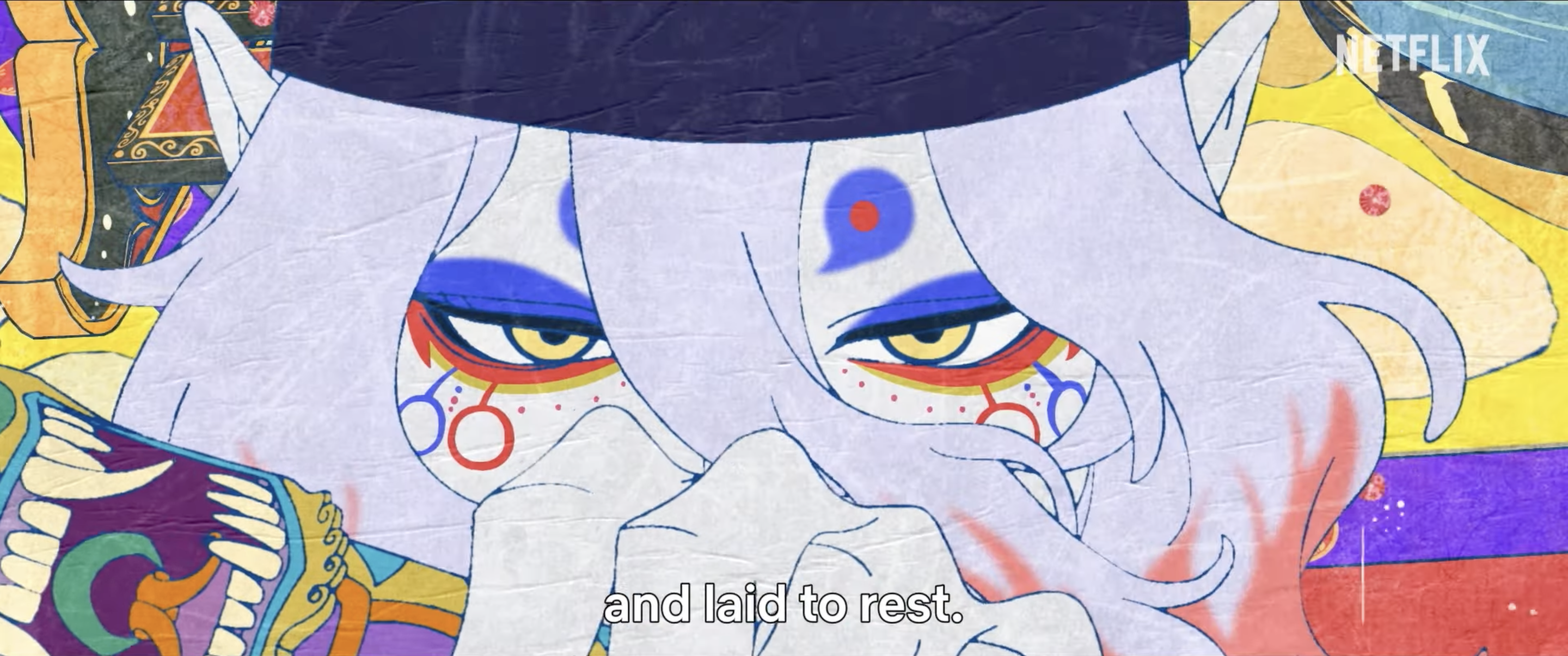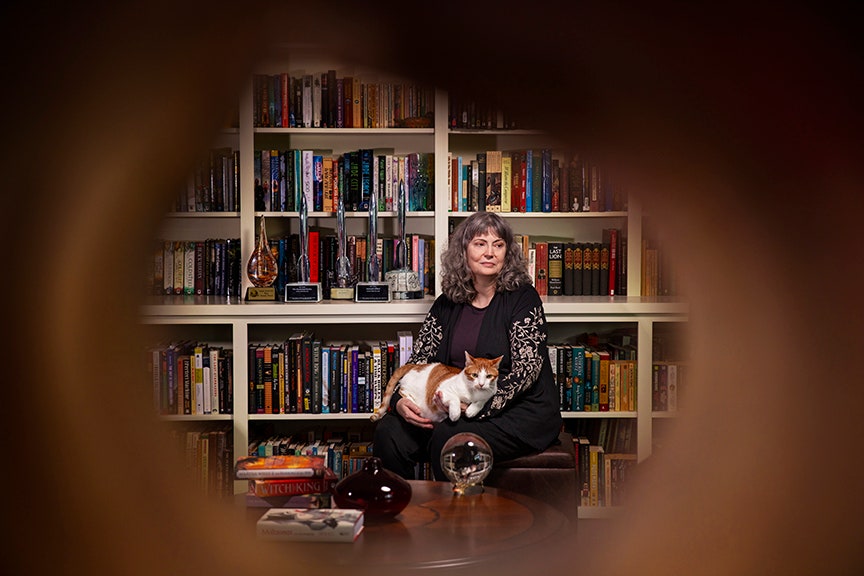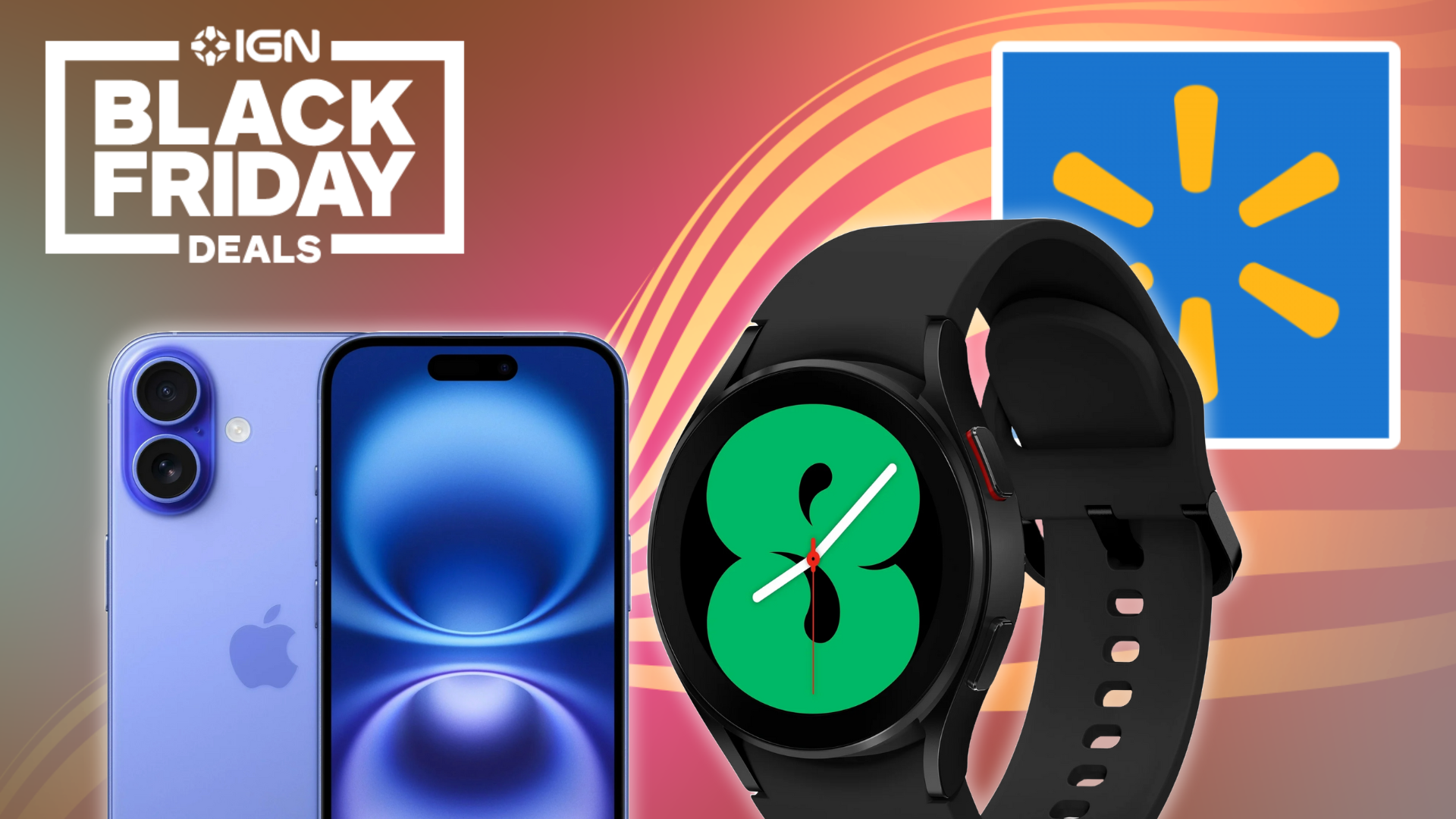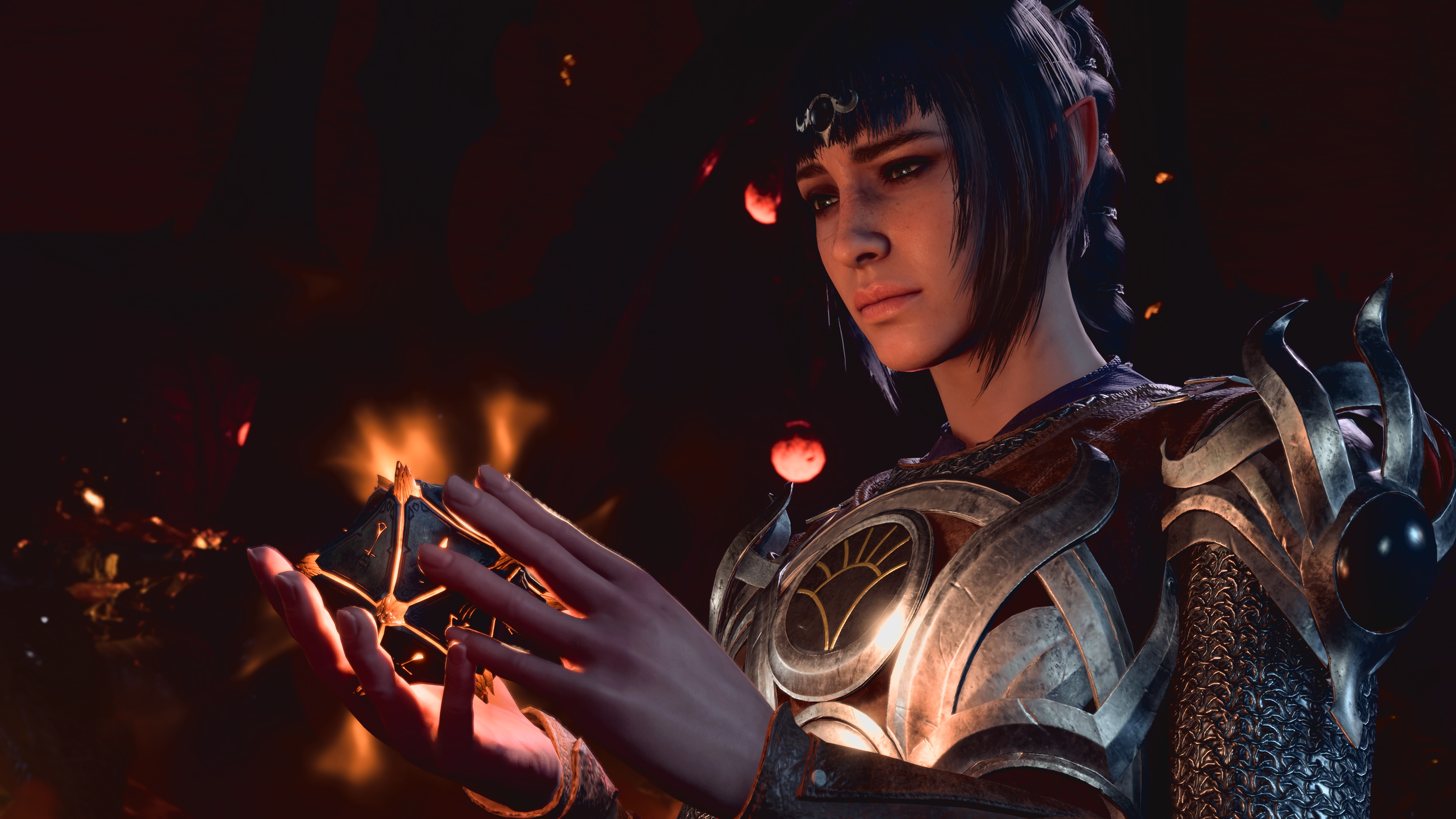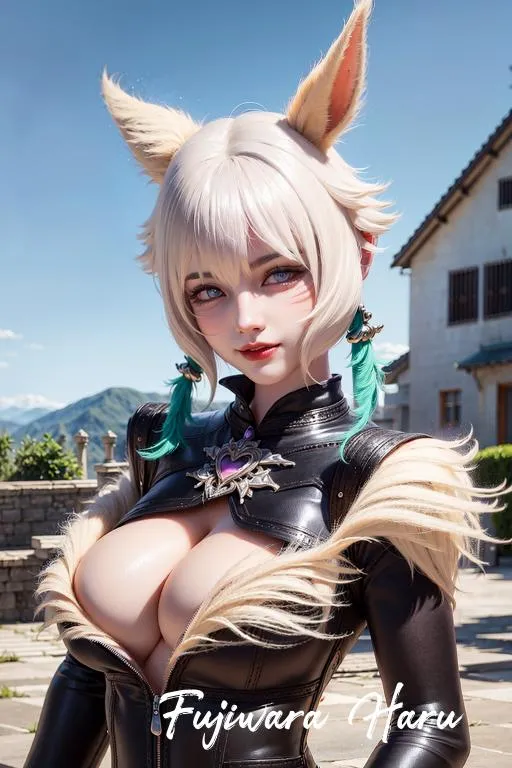
You could describe 2007’s Mononoke as a horror anime about a mysterious demon slayer. That would be technically accurate. It would also conjure almost entirely the wrong image.
So would saying that it’s rooted in Japanese ghost stories, or that it’s set in the Edo period, or that it combines computer effects with traditional 2D animation. Mononoke, created and directed by Kenji Nakamura (Welcome to Irabu’s Office), is more than the sum of its parts. It’s a detective procedural about a tantalizingly mysterious investigator combating vengeful ghosts, as told through psychedelic, experimental visuals inspired by classical Japanese theater.
Mononoke has been a fascinating, one-off (two-off at best) gem for almost two decades, without expectation of continuation — until now. Mononoke the Movie: The Phantom in the Rain, a feature-length movie continuing the adventures of the wandering demon-slaying detective known as Medicine Seller, hits Netflix on Nov. 28. Two more sequels are coming in 2025. Ahead of the movies’ release, though, it’s worth knowing where Medicine Seller came from.
The obvious appeal of the Mononoke series is in its design, inspired by classic Japanese theater and printmaking — bright colors, coarse textures, and painstakingly detailed patterns not usually seen in TV-budget anime. But for all that organic, human-hand work on the screen, the series also makes incredibly impressive use (especially for its mid-’00s era) of 3D modeled backgrounds and computer-generated textures. Nakamura leans into the uncanny contrast between the two styles of animation, with moody, tone-setting results.
But Mononoke isn’t all style and no substance: It asks the wonderful question, “What if a mysterious traveling demon slayer was also a slightly catty Agatha Christie detective, who could only unsheathe his mononoke-slaying sword if he could first uncover the secret human sins that summoned the mononoke in the first place?”
How do I watch Mononoke?
The good news is that 2007’s 12-episode Mononoke anime, showcasing four Medicine Seller stories, is currently available to stream on Netflix.
However, there’s one more Medicine Seller story out there, and it technically comes first. Nakamura introduced Medicine Seller to the world in Ayakashi: Samurai Horror Tales, a 2006 animated anthology series that hasn’t been licensed for U.S. streaming, but isn’t hard to find online.
Nakamura’s “Bake Neko,” Ayakashi’s three-episode finale story, is about a bride mysteriously slain on her wedding day, her family’s dark secrets, a vengeful cat demon, and the wandering medicine seller who turns out to be a secret demon slayer. As the bakeneko devours the household one by one, this “Medicine Seller” (he gives no other name) prevails upon the family elders to reveal their crimes, so the truth of the matter can unlock his sword and save the innocents caught by the spirit’s vengeance.
If you can find a way to watch “Bake Neko,” I would say go for it — as the very first Medicine Seller story, it’s got a more concise and complete explanation of his whole deal than the first few episodes of the Mononoke series. On top of that, it’s a twisty supernatural mystery, where the horror of the demon is only surpassed by the crime it wants to avenge.
But you’ll also be fine if you want to pull up Netflix and just start watching Mononoke, because Medicine Seller’s shifty appearance and truth-requiring sword give the series the same trappings of the best episodic detective fiction. Crucially, nobody ever wants to admit their crimes to a weird itinerant peddler until they absolutely have to — giving Mononoke the same juicy rhythm of any good episode of Columbo, Poker Face, or Murder She Wrote. It just has much wilder visuals, swords, and an all-time magical-hero transformation sequence.
The biggest mystery of Mononoke might be who Medicine Seller is, and why his only purpose (or job? Or curse?) seems to be showing up exactly where vengeful mononoke business is just about to happen. He doesn’t exactly seem human, but the show never explains what else he might be. Despite that, Nakamura still gives the distinct sense that Medicine Seller doesn’t care about saving people from their supernatural punishments — it’s just that if they die without confessing their crimes, he’ll never be able to unlock his sword and dispatch the demon they unleashed. And so, our hero’s frustration also becomes the delicious tension of the detective procedural.

“So you kidnapped a bride 50 years ago and convinced yourself she actually wanted it?” you may find yourself yelling at the TV, as Medicine Seller catches one more liar in a lie. “And then you locked her in your basement as your personal whipping post, until she starved herself to death, and now the spirit of the kitten she secretly fed is back to avenge her! Just tell Medicine Seller already, before everyone here who isn’t complicit dies horribly!”
The squirrely, condescending guilty parties of Mononoke never want to fess up, though, which makes it easy to root for Medicine Seller as much as you would for Hercule Poirot or Benoit Blanc, even when you know next to nothing about his history or motives.
The show offers assured pacing, visuals you can’t look away from, and twisty plots: What kind of mononoke is haunting the latest locale Medicine Seller visits? Who made them angry? How many people will they kill to get what they want? Nakamura is incredible at foreshadowing what’s to come through motifs and symbolism, showing even before he tells.
If any of that appeals to you, I strongly recommend you check out Mononoke before watching Mononoke the Movie: The Phantom in the Rain, which arrives on Netflix on Nov. 28.
Source:https://www.polygon.com/anime/483226/mononoke-netflix-movie-series-how-to-watch